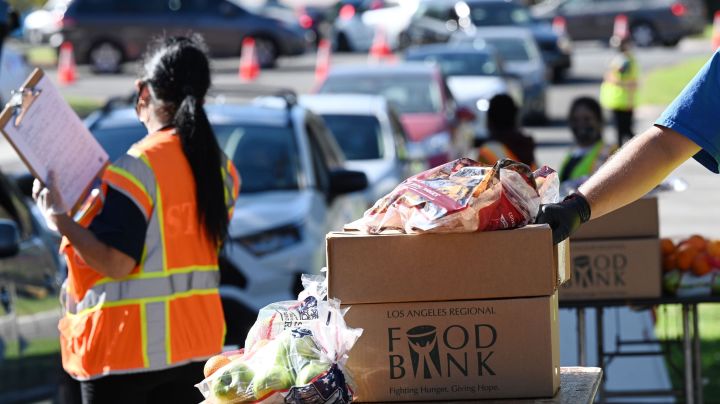
Pandemic relief package includes spending aimed at reducing food insecurity
Pandemic relief package includes spending aimed at reducing food insecurity

About 42 million people — one in eight — may experience food insecurity at some point this year. That’s the latest projection from the hunger relief organization Feeding America.
What does money for food assistance in the $1.9 trillion plan that President Joe Biden signed into law last week look like?
The latest relief package extends the 15% increase in supplemental nutrition assistance or SNAP benefits and extends another program that gives parents whose kids qualify for free lunch and additional grocery money while kids aren’t in school.
Vince Hall at Feeding America said a lots of the other aid that’s not technically food assistance will make a difference, too. “The child tax credit enhancement, the stimulus checks that were included in the latest plan. These are all powerful measures that help chip away at the larger problem of hunger across the country.”
Along with enhanced unemployment benefits and rental assistance.
But — all of this aid is short term.
And Joseph Llobrera at the Center on Budget and Policy Priorities said the need won’t be. “It remains to be seen how long it takes us to get back to normal, and what that normal looks like.”
So, he said, he would like to see the increase in food assistance extended beyond the summer and fall.
There’s a lot happening in the world. Through it all, Marketplace is here for you.
You rely on Marketplace to break down the world’s events and tell you how it affects you in a fact-based, approachable way. We rely on your financial support to keep making that possible.
Your donation today powers the independent journalism that you rely on. For just $5/month, you can help sustain Marketplace so we can keep reporting on the things that matter to you.











